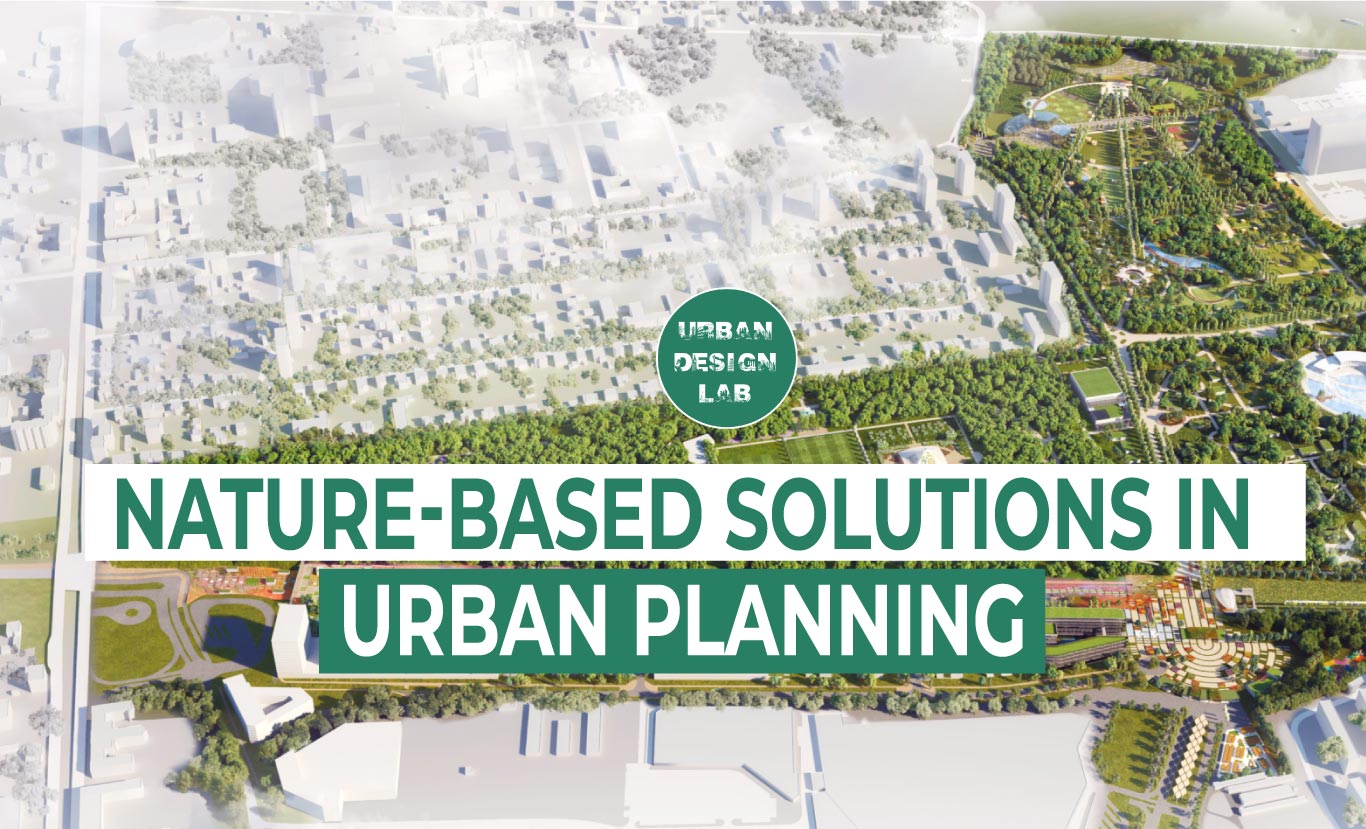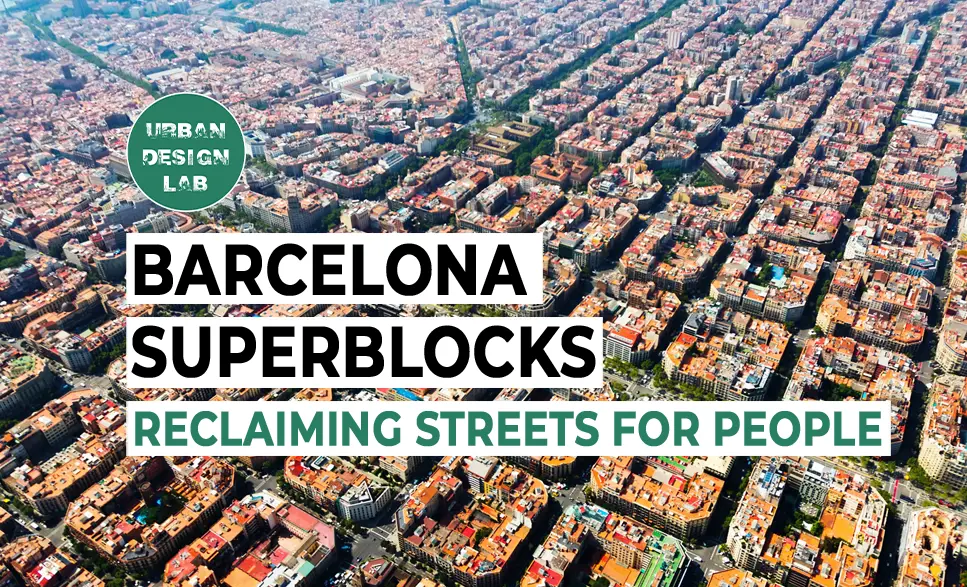
Top 10 Urban Pedestrian Only Zone: Transforming Cities

Pedestrian area is a one of concept in urban design theory by Hamid Shirvani (1985). Pedestrian zone is a part of public space and urban space which can be in the form of a street and a square. Existence of pedestrian area can support people to walking and move from one place to another place inside the city and increase connectivity with public transportation and also can increase public interest to walking and reduce private vechile uses.
The case study selection methodology in this article divides the examples into two forms of pedestrian areas, that street for and square for plaza area. The examples selection also looks at the urban context and function of the pedestrian area which split into commercial or shopping function and historical or event and ceremony function.
Case Study 1 : Strøget (Copenhagen, Denmark)
In Copenhagen, Strøget stands as an iconic pedestrian-only zone, carving out a 1.1-kilometer stretch in the city’s historical core that redefined urban design by prioritizing walkability and social vibrancy. Established in the late 19th and early 20th centuries, the street’s architectural character reflects this period’s European charm, seamlessly blending historical facades with contemporary commercial activity. Strøget was once the world’s longest pedestrian shopping street, a pioneering project that encouraged sustainable urban mobility long before it became a widespread goal. By limiting private vehicle access, Strøget helped reduce Copenhagen’s greenhouse gas emissions, setting a precedent for environmentally conscious urban planning. The area thrives as a commercial hub, hosting flagship stores from global brands such as Prada, Hermes, Gucci, and Zara, while providing ample cafés, restaurants, and bars that foster community interaction. Beyond retail, Strøget enriches the public realm with street performers and cultural activities, supporting a dynamic social atmosphere that goes beyond mere commerce. This blend of architectural heritage, sustainability, and vibrant street life positions Strøget as a model for cities worldwide, illustrating how pedestrian-only zones can transform urban environments into thriving, sustainable, and engaging spaces.
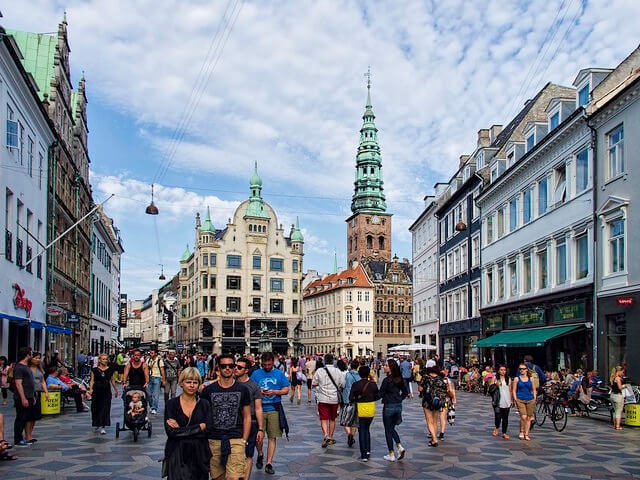
Cas Study 2 : Cat Streeat (Tokyo, Japan)
Cat Street is a popular pedestrian zone connecting Tokyo’s vibrant neighborhoods of Shibuya and Harajuku. Originally named for the numerous cats that used to frequent its narrow pathway, the street underwent a major renovation in 1964 for the Tokyo Olympics, transforming it into a welcoming pedestrian thoroughfare that reflects Japan’s affinity for walkable spaces. Over time, Cat Street has become a cultural hotspot, especially for the youth of Harajuku, who are drawn to its relaxed atmosphere and eclectic mix of shops. The area is now a landmark of Japanese youth fashion, lined with unique fashion boutiques—many offering vintage and second-hand clothing—alongside trendy bars, food stalls, and cozy cafés. Its easy access from multiple train stations adds to its appeal, making it a magnetic destination not only for Tokyo’s youth but also for tourists eager to explore local street style and culture. Cat Street’s impact on Japanese fashion and product design highlights the role of thoughtfully designed pedestrian zones in fostering creativity, community, and cultural exchange in urban spaces.

Source: Website Link
Case Study 3 : Rue Mouffetard (Paris, France)
Rue Mouffetard, nestled in Paris’s 5th arrondissement, is one of the city’s oldest streets, stretching 600 meters through a preserved medieval streetscape that showcases the architectural charm of ancient Paris. This lively street market is renowned for its abundance of fresh, local produce—from fish and cheeses to wines, meats, and seasonal fruits and vegetables—drawing both residents and visitors alike into a vibrant exchange that has endured since medieval times. Rue Mouffetard’s design is a testament to historical preservation, reflecting the enduring soul of Paris amidst modern pressures. However, this authenticity comes with the challenge of maintaining the street’s medieval character against the forces of urban modernization, ensuring it remains a “living history” experience for those who walk its storied path. Conservation efforts focus on preserving the original architectural elements, including façades, skylines, color palettes, and carefully crafted signage and street furniture that harken back to medieval Paris. As a result, Rue Mouffetard remains a bustling hub of pedestrian activity, teeming with shoppers, sellers, and curious tourists who contribute to its dynamic yet timeless atmosphere, ensuring it continues to educate and inspire generations to come.

Case Study 4 : Buchanan Street (Glasglow, Scotland)
Context and Background : Buchanan Street is a district shopping centre and walkable area with several stores and botiques. The architectural style of the buildings along this street is neoclassical. Wide street make the pedestrian circulation be comfortable. The appearance of the building facades along this road is very attractive because they display the products being sold so that pedestrians can easily see the products from the outside.
Key Challenges : The street vibe was heritage with old archictectural style, the challenges how to maintaining the original shape and condition of this road so that it remains attractive and also maintaining the uniqueness of the buildings on this road.
Design Approach and Solution : Make reservations and conservation of the architectural styles of buildings along this street including building facades, skylines and colors as well as other elements in pedestrian way such as signage, street furniture which represent history of Glasglow.
Outcomes and Impact : Several other facilities can be found on Buchanan Street, there is the Glasgow Royal Concert Hall which displays entertainment in the form of an orchestra and performances by musicians. This road also attracts visitors for shopping and you can find several cafes and restaurants.

Case Study 5 : Lincoln Road (Miami Beach, Florida)
Lincoln Road, an iconic eight-block pedestrian street on the edge of Miami Beach, ranks among the world’s premier shopping districts, celebrated for its sleek modern architecture and proximity to the scenic coastline. Its beachfront location not only enhances its visual appeal but also poses unique environmental challenges, including intense sun exposure, high temperatures, and variable coastal winds. These factors necessitate thoughtful landscape design, particularly in the selection of vegetation and materials that accommodate the coastal climate. Rows of coconut palms evoke a tropical ambiance, yet additional plantings serve as natural windbreakers, while shaded areas enhance pedestrian comfort. The use of non-reflective materials and carefully chosen color palettes reduces heat retention, making the space more welcoming year-round. Lincoln Road’s array of international boutiques—featuring popular brands like Nike, Adidas, Zara, AllSaints, and H&M—paired with a vibrant selection of restaurants and cafés, draws both locals and tourists, solidifying its status as a premier destination for shopping, dining, and urban leisure.

Case Study 6 : Piazza San Marco, Venice, Italy
Piazza San Marco, an iconic Venetian square established in the 9th century, stands as one of the world’s most historically significant urban spaces. Measuring 70 meters in width and 180 meters in length, this expansive plaza is flanked by some of Italy’s most revered architectural masterpieces, including St. Mark’s Basilica, the Doge’s Palace, Museo Correr, and the Basilica Bell Tower. However, its location within the Venetian lagoon makes it highly susceptible to seasonal flooding, presenting a recurring challenge for both preservation and public accessibility. Responding to these environmental pressures, urban designers have introduced a range of adaptive strategies aimed at enhancing the square’s resilience. The design approach includes raising sidewalks to mitigate water pooling, integrating permeable paving materials to facilitate effective drainage, and establishing absorptive zones to manage water runoff more sustainably. Breakwater systems are also being explored as a potential intervention to protect against the encroaching tidal waters. These solutions not only address the immediate issues of flooding but also preserve the cultural significance of this celebrated site. As a result, Piazza San Marco remains a dynamic, educational environment where visitors can immerse themselves in the rich layers of Venetian history and architectural heritage, from the Byzantine-influenced St. Mark’s Basilica to the classical collections within the National Archaeological Museum. The square’s cafes and live music offerings further enrich the experience, fostering a blend of historical reverence and modern vitality in Venice’s most treasured public space.

Case Study 7 : Third Street Promenade (Los Angeles, California)
Third Street Promenade in Los Angeles, California, is a vibrant, pedestrian-only destination known for its rich blend of shopping, dining, and entertainment venues. Located just steps from the beach, the Promenade offers stunning coastal views and a lively atmosphere that draws both locals and tourists. The area thrives on its dynamic street culture, with a mix of pedestrians, tourists, street vendors, and performers bringing a unique energy to the space. However, this bustling urban zone faces challenges: high rental costs and the rise of e-commerce have left some retail spaces vacant, affecting foot traffic and the area’s overall appeal. To revitalize the Promenade, urban planners and designers are advocating for a strategic redesign and rebranding effort. This includes creating a more engaging pedestrian experience and making the area more enticing for both entrepreneurs and visitors, while also assessing rental structures to support long-term tenancy and vibrancy. The Promenade’s reimagining seeks to solidify its role as a cultural and economic hub, tapping into its popularity—over 11 million annual visitors—and its cultural influence, even inspiring locales in the gaming world, as seen in Rockstar’s GTA V. By enhancing the architectural appeal and tenant mix, Third Street Promenade aims to balance modern retail trends with a walkable, community-centric space that remains an iconic destination in Los Angeles.

Case Study 7: Saint Peter's Square, Vatican City, Rome
Saint Peter’s Square, located at the heart of Vatican City in Rome, stands as a symbolic and architectural masterpiece intertwined with the rich history of Catholicism. Believed to be constructed on the site where Peter, the Apostle and the first Pope, met his martyrdom, the square is deeply significant both spiritually and historically. Architecturally, it forms a monumental visual “lock” with St. Peter’s Basilica, symbolizing the “keys to heaven” bestowed upon St. Peter. Designed by Gian Lorenzo Bernini, this grand plaza spans 320 meters in length and 240 meters in width, providing an impressive open space that can hold up to 300,000 people. The square’s layout is intended to welcome vast congregations, particularly for major events like the Feast of Corpus Christi, allowing Catholic pilgrims and visitors to gather for religious ceremonies and cultural occasions year-round. The colonnades, adorned with statues of saints, embrace visitors with a powerful sense of unity and reverence, while the pedestrian paths gracefully guide them to the square’s central obelisk, creating a harmonious blend of architecture, symbolism, and spiritual purpose that makes Saint Peter’s Square a timeless landmark.
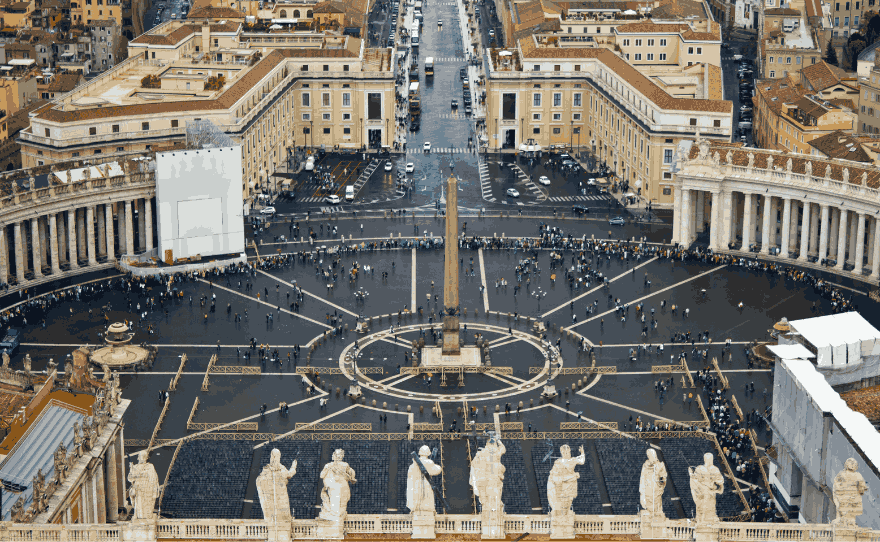
Case Study 9 : Qianmen Street (Beijing, China)
Qianmen Street, an iconic pedestrian boulevard in Beijing, stretches 840 meters in length and 21 meters in width, embodying over 570 years of history from the Ming and Qing dynasties. Once a bustling hub for traders, craftsmen, workshops, and theaters, this historic street has retained its rich architectural legacy, preserving the character and aesthetic of ancient China. However, as modernization progresses, maintaining these traditional elements presents a unique challenge, as the street’s design aims to serve as a living historical and cultural experience for visitors eager to delve into China’s heritage. To address this, conservation efforts focus on restoring and preserving historical components like traditional signage, street furniture, and architectural facades. These elements not only retain the street’s cultural integrity but also enhance pedestrian comfort and accessibility. Today, Qianmen Street blends its historic charm with modern vibrancy, housing global brands like H&M, Häagen-Dazs, and Zara alongside local Chinese businesses and culinary treasures, creating a dynamic space that appeals to both tourists and locals. The architectural style, reflecting the late Qing dynasty, invites visitors on a journey through China’s cultural evolution, making Qianmen Street a unique, immersive experience in Beijing’s urban landscape.

Case Study 10 : Plaza Mayor (Madrid,Spain)
Plaza Mayor, a historic square at the heart of Madrid, was built in the 17th century by King Philip III and inaugurated in 1620. This rectangular plaza, with its spacious central void encircled by solid structures and iconic porticos, embodies the architectural grandeur and cultural depth of Spain’s history. Designed as a flexible urban space, it has hosted an array of social activities over the centuries, from public events, parades, and street performances to bullfights and even executions, each adding to its historical significance. Maintaining this cultural and historical integrity presents a unique challenge, as efforts are continually made to preserve elements like statues, original materials, signage, and the distinct facades and pillars that capture Spain’s heritage. These conservation efforts not only celebrate the architectural splendor of Spanish design but also ensure the plaza remains a comfortable, inviting space for pedestrians. Today, Plaza Mayor serves as a lively social hub where locals and tourists gather to enjoy the bustling atmosphere, savor traditional tapas in nearby cafes and bars, and take in the enduring architectural beauty of Madrid’s historic center.

Conclusion
A distinct pattern emerges in pedestrian zones worldwide: streets primarily serve as bustling commercial hubs for shopping and retail, while squares often embody a cultural, ceremonial, and historical identity that reflects a nation’s heritage. The case studies discussed above highlight valuable precedents for governments, urban planners, architects, and urban designers, offering insights into creating vibrant, meaningful spaces that prioritize sustainability and cater to pedestrians, ultimately fostering social, economic, and environmental benefits.
Each pedestrian area is uniquely shaped by local culture, behaviors, and historical influences, resulting in diverse design elements—from street furniture and hardscape to pavement patterns and types of softscape. By designing pedestrian-friendly paths with ample facilities, cities can enhance the public’s engagement with urban spaces, making walking a pleasurable experience and transforming the urban landscape into a lively, inviting environment that celebrates both movement and connection.
References
- Zukin, S. (2012). The social production of urban cultural heritage: Identity and ecosystem on an Amsterdam shopping street. City, Culture and Society, 3(4), 281-291. https://doi.org/10.1016/j.ccs.2012.10.002
- Namirembe, S. (2022). Redeveloping pedestrian-friendly streets in neighborhoods to a better community and urban planning a case study of Kira municipality, Kampala, Uganda. https://doi.org/10.31274/cc-20240624-1200
- Ruol, P., Favaretto, C., Volpato, M., & Martinelli, L. (2020). Flooding of piazza San Marco (Venice): Physical model tests to evaluate the overtopping discharge. Water, 12(2), 427. https://doi.org/10.3390/w12020427
- Ammerman, A. J., Pearson, C. L., Kuniholm, P. I., Selleck, B., & Vio, E. (2017). Beneath the basilica of San Marco: New light on the origins of Venice. Antiquity, 91(360), 1620-1629. https://doi.org/10.15184/aqy.2017.164
- Freire-Lista, D. M., & Fort, R. (2016). Causes of scaling on Bush-hammered heritage ashlars: A case study—Plaza mayor of Madrid (Spain). Environmental Earth Sciences, 75(10). https://doi.org/10.1007/s12665-016-5688-0
- Lévy, B. (2012). Urban square as the place of history, memory, identity. Memory of the City, Kulturklammer, Belgrade, 156, 173.
- Zakariya, K., Harun, N. Z., & Mansor, M. (2015). Place meaning of the historic square as tourism attraction and community leisure space. Procedia-Social and Behavioral Sciences, 202, 477-486.

Enrico Vincensius Yudistira Harryanto
About the author
Enrico Vincensius Yudistira Harryanto is Bachelor of Urban and Regional Planning from Kalimantan Institute of Technology , Balikpapan (Indonesia). He major and area of expertise and interest research and project in Urban Design and Architecture, Urban Landscape, Urban Conservation such as cultural heritage conservation, Smart City, Geographic Information System analysis and modelling. Enrico also have expertise in Graphic Design, Illustration, Photography adn Videography to support attractive data visualization, analysis and publication.
Related articles

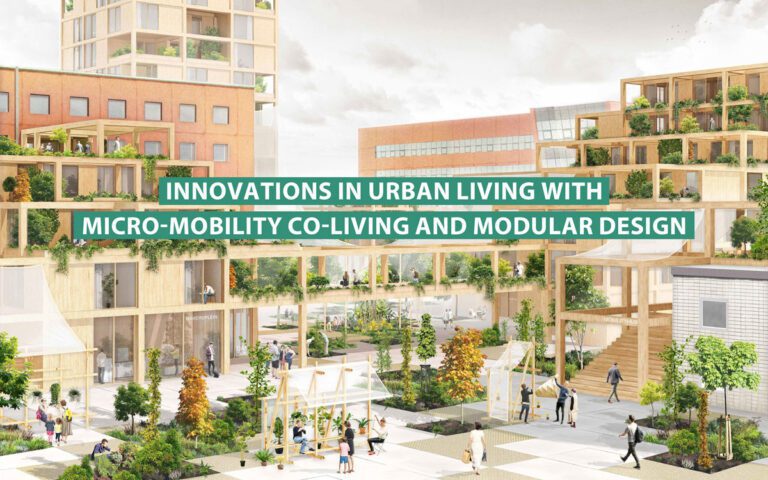
Micro-Mobility and Modular Design in Urban Living


Rethinking Urban Planning Careers in India


AI Urbanism: Utopia or Dystopia? The Unvarnished Truth.
5-Days UDL GIS
Masterclass
GIS Made Easy – Learn to Map, Analyse, and Transform Urban Futures
Session Dates
14th-18th July 2025

Free E-Book
From thesis to Portfolio
A Guide to Convert Academic Work into a Professional Portfolio”
Recent Posts
- Article Posted:
- Article Posted:
- Article Posted:
- Article Posted:
- Article Posted:
- Article Posted:
- Article Posted:
- Article Posted:
- Article Posted:
- Article Posted:
- Article Posted:
- Article Posted:
Sign up for our Newsletter
“Let’s explore the new avenues of Urban environment together “



































